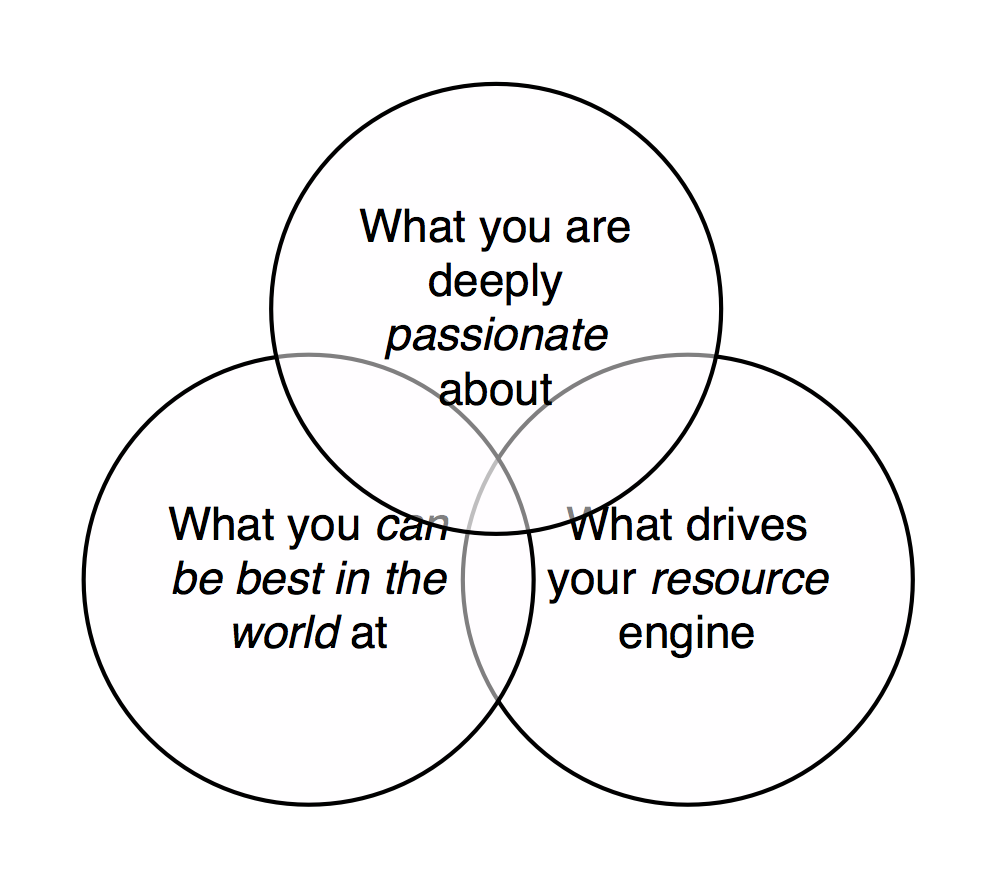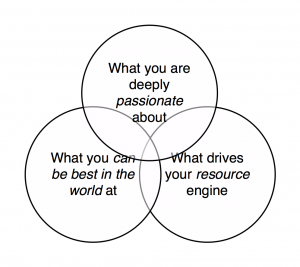Good to Great…and OEIT
[fusion_builder_container hundred_percent=”yes” overflow=”visible”][fusion_builder_row][fusion_builder_column type=”1_1″ background_position=”left top” background_color=”” border_size=”” border_color=”” border_style=”solid” spacing=”yes” background_image=”” background_repeat=”no-repeat” padding=”” margin_top=”0px” margin_bottom=”0px” class=”” id=”” animation_type=”” animation_speed=”0.3″ animation_direction=”left” hide_on_mobile=”no” center_content=”no” min_height=”none”]
In 2008, OEIT, where I work, completed a strategic planning process based on Jim Collins’ “Good to Great and the Social Sectors.” In September 2010, we’re undertaking a new strategic planning process. We thought that revisiting the 2008 process and OEIT’s Hedgehog document might be a good place to start.I started with OEIT in February 2009, so I missed the original process that lead to the hedgehog document. However, I think that I’ve tried to accept that document as the basis for our activities at OEIT.
As I prepare to help the strategic planning process, I just completed reading Jim Collins’ monograph. This post will include what I think are the important aspects. Hopefully I’ll write a followup post with my observations on working with OEIT for the last year and a half in light of the monograph, hedgehog document and realities of how we do our work.
Good to Great and the Social Sectors
The Good-to-Great Framework is essentially a logic model framework. What are our inputs, how do we affect them, to produce what outputs.
Issue One: Defining “Great”
“How effectively do we deliver on our mission relative to our impact, relative to our resources?” p. 5.
What is our Big Hairy Audacious Goal?
“What do we mean by great results?” p.7
“What matters is that you rigorously assemble evidence — quantitative or qualitative — to track your progress?” p. 7
“Any journey from good to great requires relentlessly adhering to these input variables, rigorously tracking your trajectory on the output variables, and then driving yourself to even higher levels of performance and impact.” p. 9
Issue Two: Level 5 Leadership
Is there/should there be a goal to move everyone in the organization toward the top of the Level 5 leadership pyramid? p. 12
Issue Three: First Who — Getting the Right People on the Bus, Within Social Sector Constraints
“The great companies, in contrast, focused on getting and hanging on to the right people in the first place — those who are productively neurotic, those who are self-motivated and self-disciplined, those who wake up every day, compulsively drive to do the best they can because it is simply part of their DNA.” p. 15
Issue Four: The Hedgehog Concept
“The Hedgehog Concept of the good-to-great companies…reflected understanding of three intersecting circles: 1) what you are deeply passionate about, 2) what you can be the best in the world at, 3) what drives your economic [/fusion_builder_column][fusion_builder_column type=”1_1″ background_position=”left top” background_color=”” border_size=”” border_color=”” border_style=”solid” spacing=”yes” background_image=”” background_repeat=”no-repeat” padding=”” margin_top=”0px” margin_bottom=”0px” class=”” id=”” animation_type=”” animation_speed=”0.3″ animation_direction=”left” hide_on_mobile=”no” center_content=”no” min_height=”none”][resource] engine.” p. 17
What is OEIT’s Hedgehog Concept? What is our 30 second elevator speech?
Issue Five: Turning the Flywheel — Building Momentum by Building the Brand
“Remaining true to your core values and focused on your Hedgehog Concept means, above all, rigorous clarity not just about what you do, but equally, what not to do.” p. 26
“To do the most good requires saying ‘no’ to pressure to stay, and the discipline to stop doing what does not fit.” p.27
Summary
“Preserve the Core and Simulate Progress. Enduring organizations are characterized by a fundamental duality. On the one hand, they have a set of timeless core values and a core reason for being that remain constant over long periods of time. On the other hand, they have a relentless drive for change and progress — a creative compulsion that often manifests in BHAGs (Big Hairy Audacious Goals). Great organizations keep clear the difference between their core values (which never change) and operating strategies and cultural practices (which endlessly adapt to a changing world).” p. 35
Reference
Collins, J. (2005). Good to Great and the Social Sectors. Jim Collins.[/fusion_builder_column][/fusion_builder_row][/fusion_builder_container]


